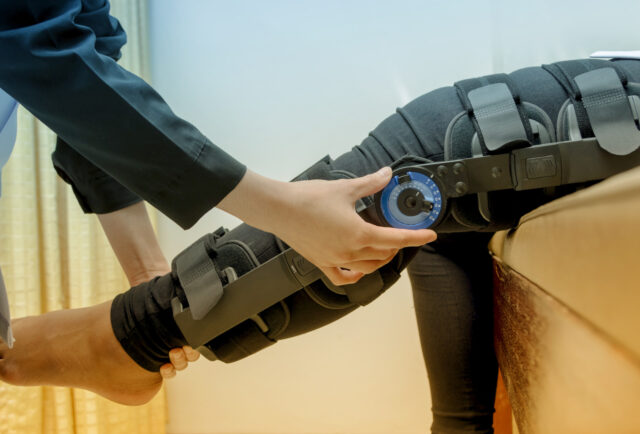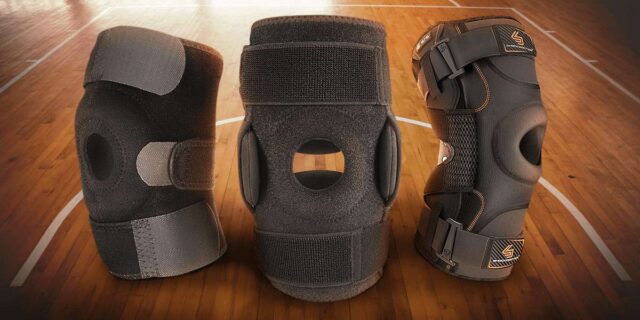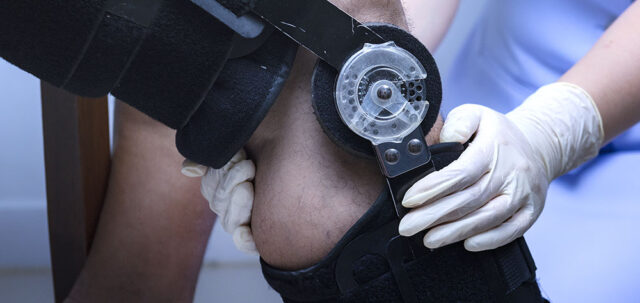
Some types of knee injuries can be treated at home, but many other types send thousands of people to the doctor seeking treatment. Knee pain due to injury or arthritis is all too common. About 19% of the population experiences knee pain, and knee arthritis is slightly more prevalent in women than in men.
The knee consists of bones, cartilage, ligaments, and tendons. Any of these parts can be injured by tears of tissues or breakage in bones. Common injuries include tendon tears, inflammation, meniscal tears — usually referred to as cartilage tears, ligament injuries such as sprains, dislocations, and fractures. That’s quite a lot of things that could go wrong in a relatively small part of the body.
The types of treatment you would need depends on the severity and type of injury you have. You can do several things to minimize knee pain until fully healed. You can alternate between using ice and heat compressions to help reduce swelling. You also have to rest the injured knee, but not too much because you need to keep the thigh muscle going strong, which supports the knee.
Other cases might need medication to manage the pain, or physical therapy to regain normal mobility. Osteoarthritis is a condition that affects the entire joint. It mainly comes about after wear and tear of knee joints. As you age, you’re more likely to experience it, and the pain of it is also more likely to increase if you leave your knee untreated and continue to expose it to potential injury and damage.
Many injuries may require wearing a knee brace. It’s one tool that will help manage knee pain. You can wear the brace almost all day while you’re out and about if it is appropriate for you. One of the company we would recommend is Aidfull. There are several reasons why a knee brace is a good option for you; below are some of these reasons. You can also check out OrthoBracing for more information.
1Exercise regularly

If your knee is injured and you want to exercise, it’s advisable to wear a brace. When injured, you might be able to continue your workout routine with a sense of stability and security when you wear a Power Rebound brace, which powers your calf and thigh muscles while reducing the pressure on your knee.
As its name suggests, the knee ‘rebounds’ quickly after movement. Braces will also shift and lessen the weight placed directly on your knee. A right brace can lessen up to 40kg from your pressure. That’s a whole lot of weight! They’re comfortable and easy to wear, so it’s something to consider to help you move around more freely.
2Lessens the knee pain
A knee sleeve can help when you need something to support the knee. A knee brace helps with existing injuries and can make walking and moving around a lot easier and less painful. You need to keep your thigh bone active as it helps strengthen the muscles around the knee. You will experience knee pain when you walk without a brace, probably forcing you to walk with a limp.
Shifts the weight
A knee brace shifts the weight of your upper body off the most injured part of your knee. That will immediately alleviate some pain. Reducing the amount of weight your knee carries is an essential factor for treating knee pain, and a right brace will do just that.
Gives stability
Osteoarthritis can make your knee feel like it is about to buckle underneath you. Naturally, you will feel unstable when walking or doing other activities. A knee brace can give you back some of the stability you’ve lost. That is especially important for older patients who can suffer serious injury from a fall.
Easy to adjust
With the right fit, it’s not difficult to adjust to wearing one when you need support. Knee braces are designed to accommodate the right grip, without constantly slipping, which poor quality ones can do. It’s no different than having to adjust to wearing glasses for your vision or a hearing aid for your hearing.
If a knee pain continues for more than a week or is severe, don’t delay seeing a doctor. Specific exercises that strengthen the thigh muscle and other muscles surrounding the knee are the first line of action to take.
Alongside training, you can try to lose some weight and can discuss with your doctor the use of knee support or brace to help you during your daily activities. It’s wise to use all your options to help bring back normal mobility after suffering a knee injury.
3What you should know before buying a knee brace

In today’s post, we explain what to consider before buying a knee brace. Size, materials, use, etc. are factors to consider when choosing the knee brace that best suits our needs.
When buying a knee brace, we advise you to ask yourself a series of questions that we are going to comment below, depending on your answers, you will know what knee pair you should buy.
4What do you need the knee brace for?
There are many types of knee pads. The use we will make of it will be decisive in our choice. It is different if you need the knee brace to prevent injuries than if you need it as a complement to the recovery of some damage.
If you want a knee brace to perform particular sports, to protect the knee brace, and prevent the knee from suffering when exercising, you will have to buy a knee brace that suits the game you are going to do. For example, there are special knee pads for cyclists, runners, hikers, skaters, snowboards, and so on. We can say that each sport has its exclusive kneepad, which protects the knee area that suffers the most in that sport.
If you have suffered an injury and you need to use knee pads to protect the area and to help you recover. In this case, our advice is that you buy the knee brace that the specialist advises, whether it is a doctor or a physiotherapist. You must follow the guidelines of use that you mark. Each injury has its specific knee brace. Thus there are knee pads for meniscus injuries, for ligament injuries, knee dislocations, knee pads for chondromalacia, etc.
5What materials make up the knee brace?
There are knee pads of different types in the market. Each of them is prescribed for different kinds of injuries or ailments. The most used knee pads are neoprene, mainly to prevent injuries.
When buying a knee brace, you must take into account the material or materials in which they have been manufactured. Especially if you are an allergic person, you should check that none of its components will produce allergies. For example, the kneepad may contain latex, a material that gives them elasticity, but some people are allergic to latex, these people will not be able to use them.
6What knee size do I need?

For a knee brace to have the desired effect, it must fit perfectly to the joint. It cannot press to the maximum, because it will not allow the blood flow that is necessary for proper functioning; neither can it be loose, since it will not have the restraining effect that we pursue with its use. In addition to moving, the kneepad will end up falling.
To know what knee size you need, you have to measure the contour of your knee, roll it with a tape measure, and record your measurement. You will need a size XS if your calculation is less than 35 cm; a size S, if it measures 34-36 cm; size M, if it is 36-38 cm; size L for 38-41 cm; size XL for 41-44 cm and size XXL for 44-49 cm.
Answering these questions, you will have what it takes to know what knee brace to buy. We advise you that before any ailment or discomfort in the knees, go to a specialist. They will value your case and will guide you on the kneepad that you need.







